The Art of Tea: Exploring the Rich Culture of Biancheng Tea Plantation

An Essential Guide to Visiting Biancheng Tea Plantation
In This Guide
- An Essential Guide to Visiting Biancheng Tea Plantation
- The Rich History and Legends of Biancheng Tea Plantation
- Main Highlights: What You Absolutely Can’t Miss
- Planning Your Visit: A Practical Guide
- Tickets: Prices, Booking, and Tips
- How to Get There: A Complete Transportation Guide
- Local Cuisine and Accommodation Nearby
- Frequently Asked Questions
- Final Thoughts on Your Trip
Nestled in the heart of the picturesque Xiangxi Tujia and Miao Autonomous Prefecture, Biancheng Tea Plantation (湘西边城茶峒) beckons travelers with its lush landscapes and rich cultural heritage. This enchanting destination offers a unique opportunity to delve into the world of Chinese tea cultivation, where the art of tea-making is as old as the hills themselves. As you wander through the verdant rows of tea bushes, you will not only be surrounded by breathtaking scenery but also immersed in the deep-rooted traditions of the local ethnic communities.
The Biancheng region, known for its mist-covered mountains and tranquil rivers, is a haven for tea enthusiasts and cultural explorers alike. Here, the air is perfumed with the delicate aroma of freshly processed leaves, and the warm hospitality of the local farmers invites you to experience the intricate journey of tea—from the tender plucking of young leaves to the delicate brewing rituals that follow. This is where history and nature intertwine, creating a sensory feast that resonates with the essence of Chinese culture.
Whether you are an avid tea connoisseur or a curious traveler seeking to understand the significance of tea in Chinese society, Biancheng Tea Plantation offers an authentic experience that transcends mere sightseeing. Join us as we embark on an unforgettable journey through this idyllic oasis, where each sip of tea tells a story and every moment spent among the tea bushes deepens your appreciation for this revered beverage.
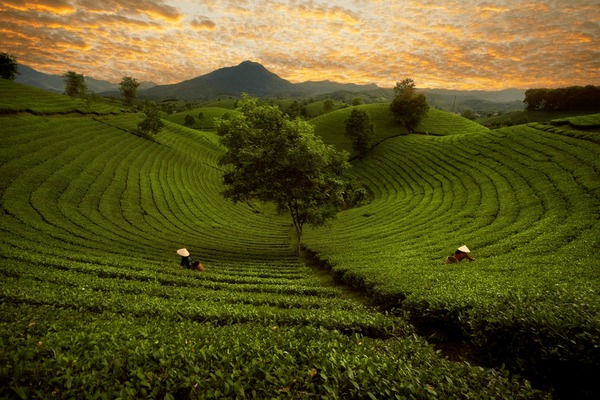
Biancheng Tea Plantation.
The Rich History and Legends of Biancheng Tea Plantation
Nestled in the picturesque landscape of Hunan Province, the Biancheng Tea Plantation (湘西边城茶峒) is not only a haven for tea lovers but also a treasure trove of rich history and captivating legends that intertwine the art of tea cultivation with the cultural tapestry of the region.
A Historical Overview

Biancheng Tea Plantation.
The origins of tea cultivation in Biancheng can be traced back over a thousand years, deeply rooted in the traditions of the indigenous ethnic groups that have called this area home. Historically, this region has served as a significant agricultural hub, with tea being one of its most prized commodities. The unique microclimate—characterized by misty mornings and fertile soil—creates an ideal environment for producing high-quality tea leaves.
Throughout the centuries, Biancheng has played a vital role in the trade routes that connected different parts of China, facilitating the exchange of not only tea but also culture, ideas, and traditions. The establishment of the ancient tea horse road, which linked southern China with Tibet, further cemented the importance of this region in the broader narrative of tea history.
Legends that Brew in the Leaves
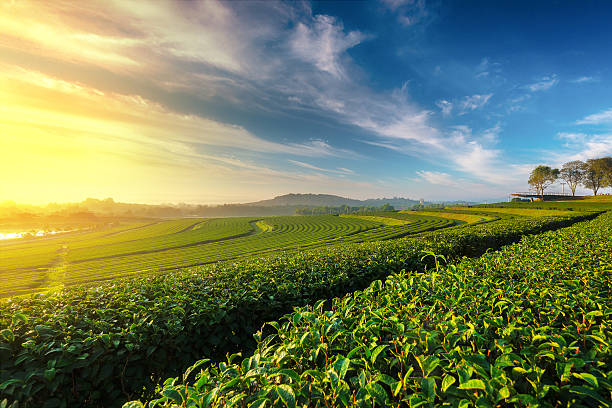
Biancheng Tea Plantation.
The tea bushes of Biancheng are steeped in legends that speak to the profound connection between the land and its people. One popular tale recounts the story of a benevolent goddess who descended from the heavens to bless the local farmers with the knowledge of tea cultivation. According to the legend, she taught them the secrets of nurturing the fragile tea plants, ensuring that the community would thrive and prosper. To this day, locals honor this goddess during the tea harvest festival, celebrating not only the yield but also the spirit of gratitude for the land’s bountiful gifts.
Another enduring legend tells of a brave warrior who, after a long battle, sought solace in the serene hills of Biancheng. It is said that he stumbled upon a hidden grove of tea trees, where he drank from the leaves and found renewed strength and clarity. Inspired by the tea’s restorative properties, he returned to his village to share this newfound wisdom, leading to the establishment of the first tea gatherings. This tradition of communal tea drinking remains an integral part of Biancheng culture, symbolizing unity and friendship.
Cultural Significance
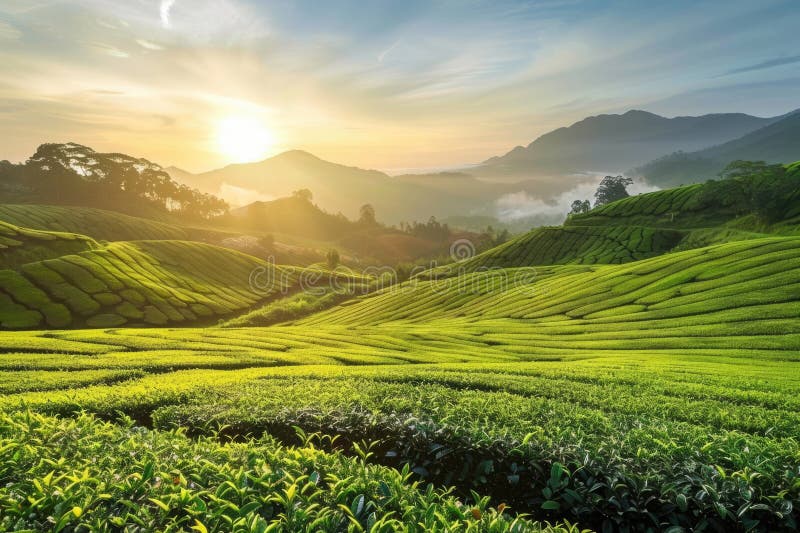
Biancheng Tea Plantation.
The Biancheng Tea Plantation is more than just a scenic spot for travelers; it is a living testament to the enduring legacy of tea in Chinese culture. The meticulous art of growing and processing tea has been passed down through generations, with local families often engaging in tea cultivation as a rite of passage. Visitors can witness firsthand the age-old techniques of hand-plucking tender leaves and the intricate processes of drying and fermenting, all while listening to the stories that accompany each step.
Moreover, tea has woven its way into the social fabric of the Biancheng community. Traditional tea ceremonies are performed to mark significant life events, from weddings to the birth of a child, reinforcing the idea that tea is not merely a beverage but a vessel of connection and tradition.
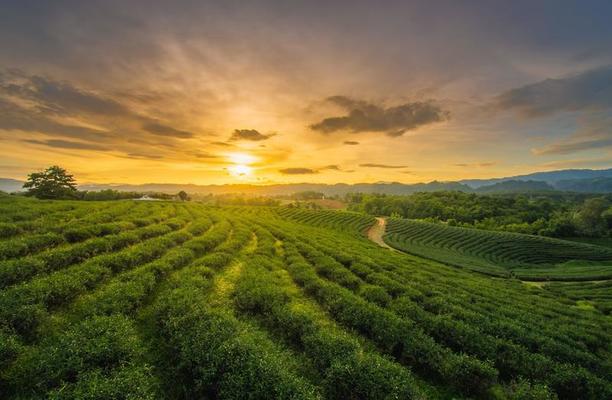
Biancheng Tea Plantation.
Exploring Biancheng Today
Today, as you wander through the verdant rows of tea plants, you can feel the echoes of history and the whispers of legends in the gentle breeze. The Biancheng Tea Plantation invites you to embark on a sensory journey, where you can taste the fruits of centuries of cultivation, immerse yourself in local customs, and connect with the vibrant community that continues to thrive in harmony with nature.
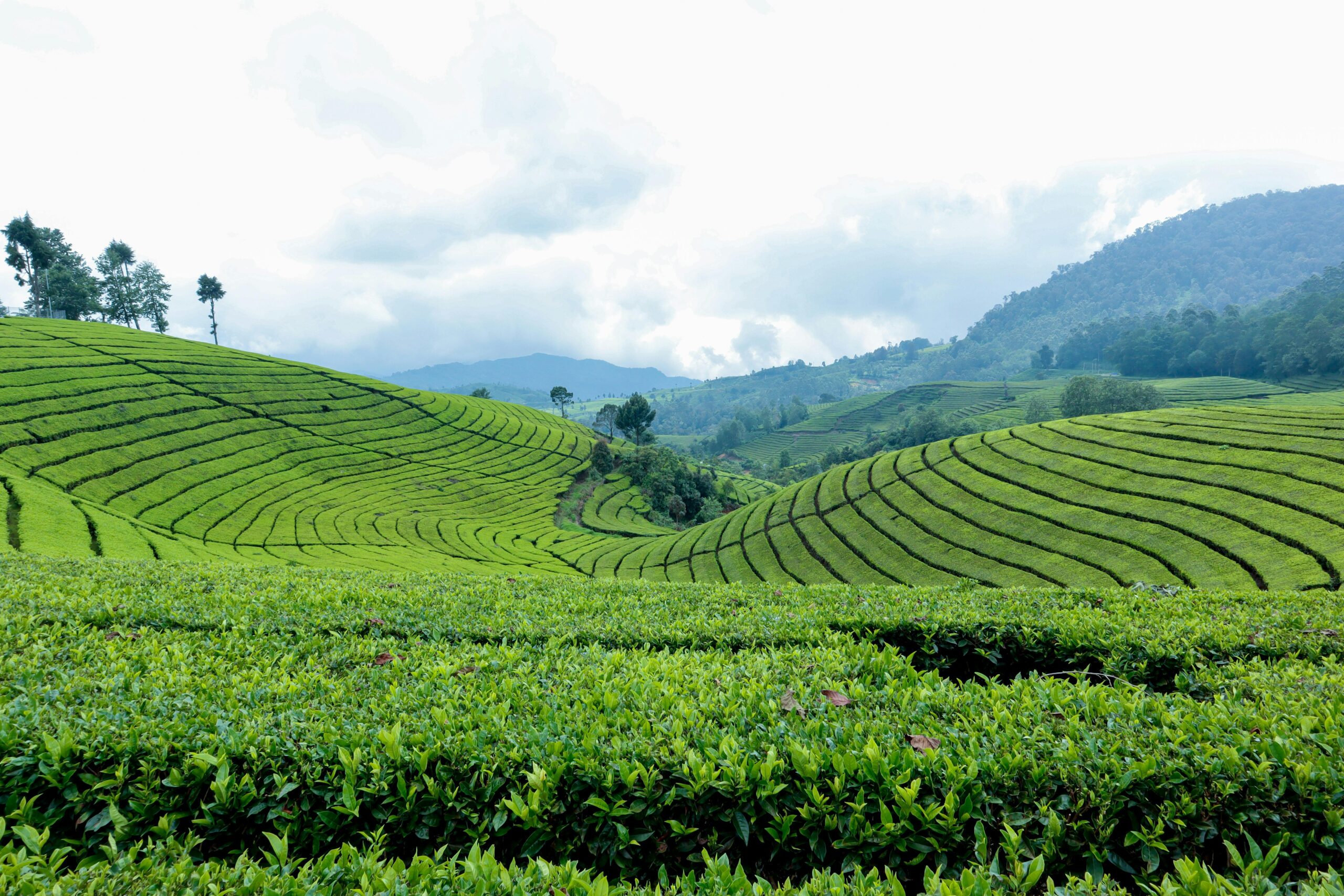
Biancheng Tea Plantation.
Visiting Biancheng is not just a retreat into the beauty of tea country; it is an opportunity to engage with the profound history and the rich folklore that define this enchanting region. With each sip of freshly brewed tea, you too become a part of its enduring legacy, steeped in the stories of the past and the promise of the future.
Main Highlights: What You Absolutely Can’t Miss
Discover the Essence of Biancheng Tea Plantation
Nestled in the enchanting landscapes of Xiangxi, the Biancheng Tea Plantation (湘西边城茶峒) offers a captivating journey into the heart of Chinese tea culture. As an international traveler seeking a deep connection to Chinese history and tradition, this destination is not to be missed. Here are the main highlights that will make your visit unforgettable.
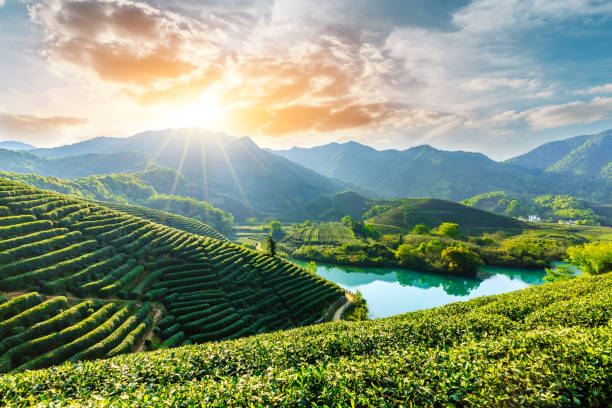
Biancheng Tea Plantation.
1. Breathtaking Scenery: The Lush Green Hills
The plantation is an idyllic setting, where rolling hills carpeted with vibrant green tea bushes create a stunning visual feast. The picturesque backdrop of mountains shrouded in mist adds to the allure, making it an ideal spot for photography enthusiasts and nature lovers alike. The pristine environment provides a perfect escape from the hustle and bustle of urban life.
2. Cultural Immersion: Tea Picking Experience
Engage in the authentic experience of tea picking alongside local farmers. This hands-on activity allows you to appreciate the meticulous care that goes into cultivating tea. Learn about traditional farming techniques passed down through generations, and gain insight into the significance of tea in Chinese culture. Participating in this age-old practice is a unique way to connect with the local community.
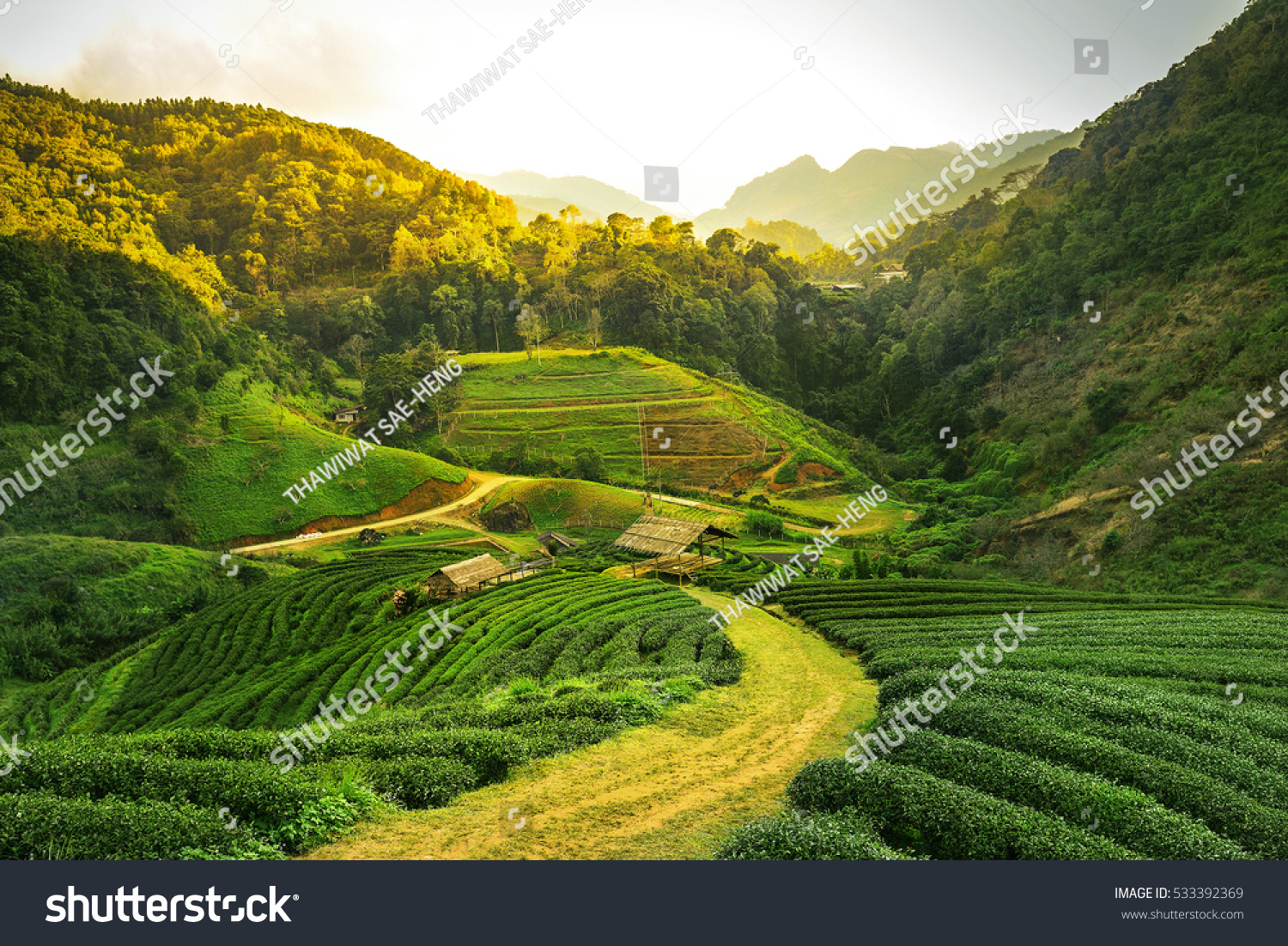
Biancheng Tea Plantation.
3. Tea Processing Workshops: A Journey from Leaf to Brew
The Biancheng Tea Plantation offers workshops where visitors can witness the entire tea processing journey—from hand-plucking the tender leaves to the intricate methods of drying, rolling, and sorting. Here, you will discover the nuances of different tea types and how environmental factors influence their flavors. This educational experience deepens your appreciation for this cherished beverage.
4. Culinary Delights: Tea Tasting Sessions
No visit to the Biancheng Tea Plantation would be complete without indulging in a tea tasting session. Sample a variety of teas, including the locally revered varieties, and learn how to identify their distinct flavors and aromas. The expertise of local tea masters will guide you through the subtleties of each brew, enhancing your sensory experience.
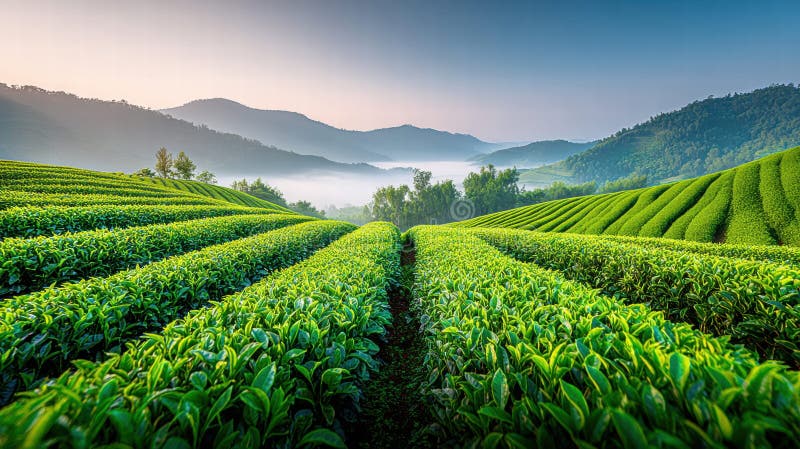
Biancheng Tea Plantation.
5. Stunning Sunset Views: A Photographic Paradise
As the day draws to a close, find a tranquil spot within the plantation to witness the breathtaking sunsets over the tea fields. The golden hues illuminating the lush greenery create a magical atmosphere that is perfect for reflection and photography. This serene moment allows you to fully appreciate the natural beauty surrounding you.
6. Cultural Events: Festivals and Celebrations
If your visit coincides with local tea festivals, you’ll have the chance to witness vibrant cultural celebrations. These events often feature traditional performances, tea ceremonies, and local culinary delights, showcasing the rich heritage of the region. Engaging with the community during these festivities provides a deeper understanding of the cultural significance of tea in daily life.
7. Local Crafts: Souvenir Shopping
Bring a piece of the Biancheng Tea Plantation home with you by exploring local artisan shops. Here, you can find beautifully crafted tea sets, traditional tea utensils, and, of course, freshly packaged tea. Purchasing these items not only supports local artisans but also allows you to carry a piece of this enchanting experience with you.
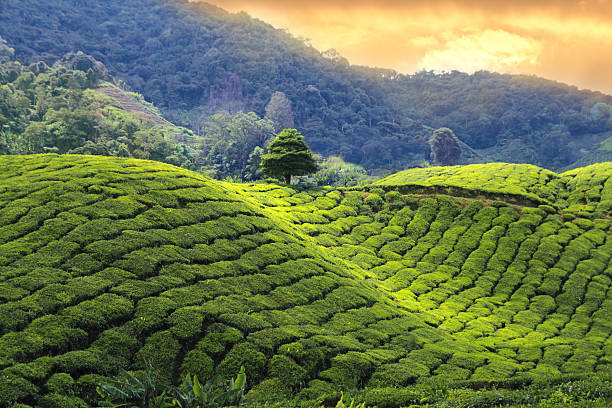
Biancheng Tea Plantation.
8. Accommodations: Stay Amidst Nature
Consider staying at a local homestay or boutique guesthouse near the plantation. This allows you to immerse yourself in the rural lifestyle of the region, enjoying the warm hospitality of local families. Waking up to the serene views of tea fields and the sounds of nature enhances the overall experience of your visit.
Conclusion: Your Journey Awaits
Visiting the Biancheng Tea Plantation is more than just an exploration of tea; it’s a profound journey into the heart of Chinese culture and history. The combination of stunning landscapes, rich traditions, and engaging experiences makes this destination a must-visit for anyone seeking to connect with the essence of China. Allow yourself to be captivated by the charm of this remarkable plantation, and create memories that will last a lifetime.
Planning Your Visit: A Practical Guide
Discovering Biancheng Tea Plantation: A Traveler’s Guide
Nestled in the enchanting landscapes of Xiangxi, the Biancheng Tea Plantation (湘西边城茶峒) offers an immersive experience into the rich tapestry of Chinese tea culture and history. To truly appreciate the serenity and beauty of this region, as well as its cultural significance, planning your visit with the following insights will enhance your journey.
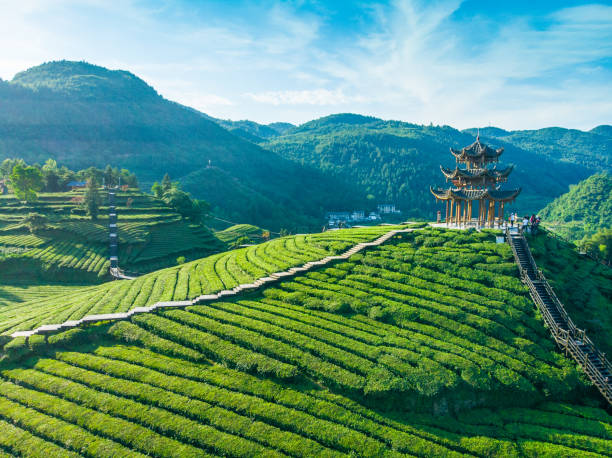
Biancheng Tea Plantation.
Best Time to Visit
The ideal time to explore the Biancheng Tea Plantation is during the spring and autumn months (March to May and September to November). During these periods, the weather is mild, allowing visitors to enjoy the stunning vistas of rolling tea hills and partake in tea-picking activities. Moreover, these seasons coincide with the tea harvest, providing an authentic experience of the local tea culture.
Getting There
Transportation Options:
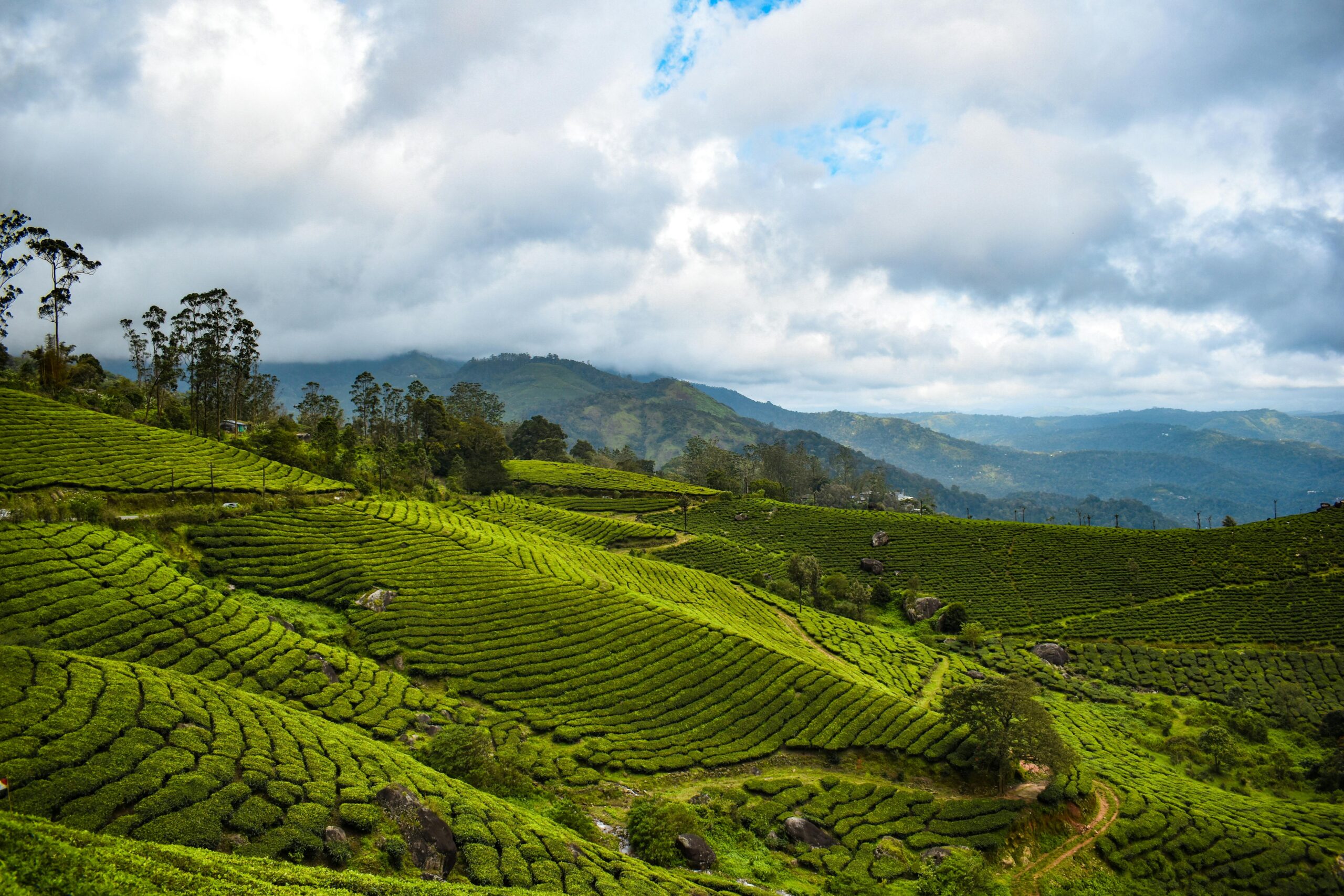
Biancheng Tea Plantation.
- By Air: The nearest major airport is in Zhangjiajie, which is approximately 180 kilometers from Biancheng. You can take a taxi or a shuttle from the airport to the plantation.
- By Train: Xiangxi Railway Station is well-connected to several cities. From there, you can take a local bus or hire a taxi to reach the plantation.
- By Bus: Regular bus services operate from major cities such as Fenghuang and Jishou, making it convenient to access the plantation.
Accommodation
To fully immerse yourself in the tea culture, consider staying on-site at one of the charming homestays or guesthouses that dot the plantation. This not only provides a unique experience of rural life but also allows you to wake up to the soothing sights and sounds of tea cultivation. Look for options that offer tea tasting sessions and guided tours of the plantation.
Recommended Accommodations:
- Local Homestays: Experience authentic hospitality and home-cooked meals made with locally sourced ingredients.
- Boutique Hotels: Enjoy a blend of modern comfort and traditional décor in nearby towns, often with stunning views of the tea fields.
Engaging with Tea Culture
Activities to Consider:
- Tea Picking: Participate in seasonal tea picking to understand the meticulous process of selecting the finest leaves.
- Tea Making Workshops: Join workshops offered by local farmers to learn about traditional tea processing techniques, from withering to roasting.
- Tea Tasting Ceremonies: Delight in the flavors of various locally produced teas while learning about their unique characteristics from knowledgeable hosts.
Exploring the Surroundings
Biancheng is not just about tea; the region is steeped in history and natural beauty. Take time to explore:
- Local Markets: Experience the vibrant culture by visiting nearby markets where you can find local crafts and taste traditional snacks.
- Cultural Sites: Discover the ancient architecture and temples that reflect the rich history of the Xiangxi region, including its ethnic minority cultures.
- Nature Trails: Wander through scenic trails that offer breathtaking views of the landscape, perfect for photography and enjoying the tranquility.
Practical Tips
- Language: While many locals may speak some Mandarin, it’s beneficial to learn a few basic phrases in Mandarin or bring a translation app to enhance your interactions.
- Currency: Ensure you have cash on hand, as smaller shops and guesthouses may not accept credit cards. ATMs are available in nearby towns.
- Respect Local Customs: When visiting tea plantations and interacting with local communities, be mindful of local customs and practices to foster positive exchanges.
Conclusion
A visit to the Biancheng Tea Plantation promises an enriching journey into the heart of Chinese tea culture. With its stunning landscapes, hospitable locals, and a myriad of activities, your adventure will be one of both relaxation and cultural discovery. So pack your bags, prepare your senses, and get ready for an unforgettable experience in the lush green embrace of Xiangxi.
Tickets: Prices, Booking, and Tips
When planning your visit to the Biancheng Tea Plantation, understanding the ticketing process and associated costs is crucial to ensuring a smooth and enjoyable experience. Below is a comprehensive guide that covers everything you need to know about ticket prices, booking methods, and valuable tips to enhance your visit.
Ticket Prices
- Entry Fee: The standard entry fee to the Biancheng Tea Plantation is approximately ¥50 (CNY) per person. This fee grants you access to the lush tea fields, scenic viewpoints, and the opportunity to witness the traditional tea-making process.
- Guided Tours: If you wish to deepen your understanding of the tea culture and cultivation techniques, consider opting for a guided tour. Prices range from ¥100 to ¥200 (CNY) per person, depending on the tour duration and inclusions, such as tea tastings or hands-on experiences like tea picking.
- Special Events: Keep an eye out for seasonal events or festivals at the plantation, which may come with separate ticketing options and fees. These events often feature live demonstrations, workshops, and cultural performances, providing an enriching experience beyond the usual tour.
Booking Methods
- Online Reservations: For a hassle-free visit, it’s advisable to book your tickets online through the official website of Biancheng Tea Plantation. This ensures your spot, especially during peak seasons, and allows you to select your preferred time for guided tours.
- On-site Purchase: If you prefer spontaneity, tickets can also be purchased at the entrance. However, during busy periods, such as weekends and holidays, be prepared for potential wait times and limited availability for guided tours.
- Package Deals: Some travel agencies offer package deals that include transportation, accommodation, and tickets to Biancheng Tea Plantation. These can be a convenient option if you are looking to explore multiple attractions in the region.
Tips for a Memorable Visit
- Optimal Timing: The best time to visit the plantation is during the spring and early summer months (March to June). This period coincides with the tea harvesting season and allows you to witness the vibrant green fields at their peak.
- Dress Comfortably: Wear comfortable clothing and sturdy shoes, as exploring the plantation may involve walking on uneven terrain. A hat and sunscreen are also recommended to protect against the sun.
- Engage with Locals: Take the opportunity to chat with local tea farmers and guides. Their stories and insights can greatly enhance your understanding of the cultural significance of tea in the region.
- Participate in Tea Tastings: Don’t miss the chance to partake in tea tastings offered on-site. This experience will not only tantalize your taste buds but also provide a deeper appreciation for the nuances of different tea varieties.
- Souvenir Shopping: Consider purchasing fresh tea or tea-related products directly from the plantation. This not only supports local farmers but ensures you take home an authentic piece of your experience.
By following these guidelines, your journey to the Biancheng Tea Plantation will be both seamless and enriching. Prepare to immerse yourself in the captivating world of tea cultivation, where history and culture merge beautifully in the lush landscapes of this remarkable region.
How to Get There: A Complete Transportation Guide
Getting to Biancheng Tea Plantation: Your Comprehensive Transportation Guide
Nestled in the heart of Xiangxi, the Biancheng Tea Plantation (湘西边城茶峒) offers a serene escape into the lush landscapes of tea cultivation. As you prepare for your journey to this captivating destination, let us guide you through the various transportation options available, ensuring a seamless arrival to this aromatic haven.
Arriving by Air
Nearest Airport: Zhangjiajie Hehua Airport (DYG)
The closest major airport to Biancheng Tea Plantation is Zhangjiajie Hehua Airport, located approximately 45 kilometers away. This airport serves domestic flights from major cities like Beijing, Shanghai, and Guangzhou. International travelers can connect through these hubs.
- Airport Transfer Options:
- Taxi: Taxis are readily available outside the airport. A taxi to Biancheng will take about one hour and cost around 150-200 RMB.
- Shuttle Bus: Check for any shuttle bus services that might operate between the airport and Fenghuang County, which is close to the plantation.
Reaching by Train
Train Stations:
The nearest train station is Fenghuang Railway Station, which is well-connected with direct trains from cities like Changsha and Zhangjiajie.
- From Fenghuang Railway Station to Biancheng Tea Plantation:
- Taxi: The quickest option, taking about 30 minutes. Expect to pay around 50 RMB.
- Public Bus: A more economical choice, though it may take longer and require transfers. Look for local buses heading towards Biancheng.
Travel by Bus
Long-Distance Buses:
Several long-distance bus companies operate from major cities, including Changsha and Zhangjiajie, to Fenghuang. The journey typically takes 4 to 6 hours, depending on traffic.
- From Fenghuang Bus Station to Biancheng Tea Plantation:
- Taxi: A straightforward and convenient option, taking approximately 30 minutes.
- Local Bus: If you’re feeling adventurous, local buses may take you closer to the plantation, but be prepared for a longer travel time.
Exploring by Car
Self-Drive or Rental Car:
For those who prefer to explore at their own pace, renting a car can be a fantastic option. The scenic drive from Zhangjiajie or Changsha to Fenghuang boasts breathtaking landscapes.
- Driving Directions:
Follow the G319 highway, and use navigation apps for precise directions to Biancheng Tea Plantation.
Local Transportation
Getting Around Biancheng:
Once you arrive at Biancheng, the plantation itself is accessible on foot, allowing you to fully immerse yourself in the fragrant surroundings.
- Bicycles: Many local accommodations may offer bicycle rentals, providing a fun way to explore the plantation and surrounding areas.
- Guided Tours: Consider joining a guided tour that includes transportation and insights into the tea cultivation process, enriching your cultural experience.
Tips for a Smooth Journey
- Language: English may not be widely spoken, so it’s helpful to have key phrases translated or a translation app handy.
- Cash: While larger establishments may accept credit cards, having cash (RMB) on hand is advisable for smaller vendors and transportation.
- Timing: Plan your travel during daylight hours to enjoy the scenic routes and avoid navigating rural areas at night.
With these transportation insights, you are well-equipped to embark on your journey to Biancheng Tea Plantation. Whether you arrive by air, train, bus, or car, the lush tea fields and rich cultural experiences await to captivate your senses and enrich your understanding of this storied region of China.
Local Cuisine and Accommodation Nearby
Discovering Local Flavors and Comfortable Stays Near Biancheng Tea Plantation
Nestled in the picturesque hills of Hunan Province, Biancheng Tea Plantation (湘西边城茶峒) offers not only breathtaking vistas of lush green tea fields but also a taste of local culture through its vibrant cuisine and charming accommodations. As you immerse yourself in the serene beauty of this region, let us guide you to some culinary delights and cozy places to stay that will enhance your experience.
Culinary Delights: Savoring Local Hunan Cuisine
Hunan cuisine, known for its bold flavors and spicy notes, is a defining aspect of the region’s culinary landscape. Here are some dishes you must try during your visit:
- Spicy Steamed Fish (剁椒鱼头): A quintessential Hunan dish featuring fish head steamed with a generous amount of chopped chili peppers, offering a perfect blend of freshness and heat.
- Chairman Mao’s Red Braised Pork (毛氏红烧肉): This dish is a tribute to the famous leader and is characterized by its tender pork belly, slowly braised in a rich sauce made of soy sauce, sugar, and spices, resulting in a sweet and savory flavor.
- Hunan Rice Noodles (米粉): Served both hot and cold, these rice noodles are a versatile staple, often accompanied by a variety of meats, vegetables, and a spicy broth.
- Stir-Fried Tea Leaves (炒茶叶): A unique dish where tender young tea leaves are stir-fried with garlic and other seasonings, providing a fresh and aromatic taste that speaks to the region’s tea culture.
For an authentic dining experience, explore local eateries in the nearby town of Biancheng. Many family-run restaurants pride themselves on using fresh, locally sourced ingredients, ensuring that you enjoy the true flavors of Hunan.
Cozy Accommodation: Where Comfort Meets Culture
After a day of exploring the lush tea fields and savoring local delicacies, retreat to one of these charming accommodations that emphasize comfort and local hospitality:
-
Tea Plantation Homestays: For an immersive experience, consider staying at a homestay within the tea plantation itself. These cozy lodgings often offer personalized service and the chance to engage directly with tea farmers, learning about their daily lives and practices. Wake up to the serene sounds of nature and enjoy breakfast with freshly brewed tea.
-
Biancheng Boutique Hotel: Located a short distance from the plantation, this hotel offers modern amenities wrapped in traditional architecture. With stunning views of the surrounding hills and tea fields, guests can unwind in comfort while experiencing local culture through decor and cuisine.
-
Mountain Lodge: For those seeking tranquility, a mountain lodge in the nearby hills provides a peaceful retreat. With rustic charm and breathtaking views, you can enjoy evening walks and star-gazing after a day of exploration.
-
Eco-Resorts: A few eco-resorts in the region focus on sustainability and preserving the natural landscape. These accommodations often feature organic meals and guided tours of the tea plantation, making them an excellent choice for eco-conscious travelers.
Final Thoughts
Your journey to Biancheng Tea Plantation promises to be a feast for the senses, enriched by the captivating flavors of Hunan cuisine and the warm embrace of local hospitality. Whether you savor a spicy dish or relax in a homestay surrounded by tea fields, embrace the opportunity to connect with the culture and traditions that make this region truly special. As you sip on a cup of freshly brewed tea, you’ll find yourself deeply entrenched in the beauty and authenticity of this enchanting destination.
Frequently Asked Questions
Frequently Asked Questions about Biancheng Tea Plantation
1. What is the best time to visit Biancheng Tea Plantation?
The ideal time to visit Biancheng Tea Plantation is during the spring (March to May) and autumn (September to November) seasons. During these months, the weather is typically mild and conducive to exploring the lush landscapes and enjoying tea tastings.
2. How can I get to Biancheng Tea Plantation?
Biancheng is accessible from major cities in Hunan Province, such as Changsha and Zhangjiajie. You can take a train or bus to Fenghuang County, followed by a short taxi ride to the plantation. For the most scenic experience, consider renting a motorbike or hiring a local guide.
3. Are there guided tours available?
Yes, many local operators offer guided tours of Biancheng Tea Plantation. These tours typically include tea-picking experiences, insights into traditional tea processing methods, and tasting sessions. Engaging a guide will enhance your understanding of the local culture and the significance of tea in the region.
4. Can visitors participate in tea picking?
Absolutely! Visitors are often welcome to participate in tea picking, especially during the harvest season, which usually occurs in late spring and early summer. This hands-on experience allows you to connect with the local customs and appreciate the labor that goes into producing high-quality tea.
5. What types of tea are produced at Biancheng Tea Plantation?
Biancheng is renowned for its high-quality green tea, particularly varieties that exhibit delicate aromas and complex flavors. You may also find other types of tea, such as black tea and oolong, depending on the season and cultivation methods employed by local farmers.
6. Are there accommodation options near the plantation?
Yes, there are several accommodation options available near Biancheng Tea Plantation. You can choose from cozy homestays that offer an authentic experience of rural life to boutique hotels that provide more comfort and amenities. Staying close to the plantation allows you to fully immerse yourself in the tranquil environment.
7. What should I wear when visiting the plantation?
Comfortable clothing and sturdy shoes are advisable when visiting Biancheng Tea Plantation. Layer your clothing, as temperatures can vary throughout the day. If you plan to participate in tea picking, consider wearing a hat and sunscreen to protect yourself from the sun.
8. Can I buy tea directly from the plantation?
Yes, visitors are encouraged to purchase tea directly from the plantation. This not only supports local farmers but also ensures that you take home fresh, high-quality tea as a memorable souvenir. Many plantations offer tastings and will package your selections for travel.
Final Thoughts on Your Trip
As you prepare to depart from the serene landscapes of the Biancheng Tea Plantation, take a moment to reflect on the myriad experiences that have unfolded during your visit. This enchanting destination is more than just a picturesque retreat; it is a deeply woven tapestry of history, culture, and nature that invites you to connect with the soul of Chinese tea.
A Journey Beyond Flavor
Your time at Biancheng has offered you not just the chance to indulge in the exquisite flavors of high-quality tea, but also an opportunity to delve into the rich heritage of tea cultivation that has thrived in this region for centuries. From the meticulous care taken by local farmers to the traditional practices that have been passed down through generations, each cup of tea you savored tells a story of dedication and artistry.
Memories to Cherish
Imagine the mornings spent walking among the lush, emerald rows of tea bushes, the crisp mountain air invigorating your spirit as you learned about the intricate processes of tea production. Picture the delightful conversations shared with local tea artisans, whose warmth and hospitality have undoubtedly enriched your journey. These moments are more than mere memories; they are connections forged with a culture that values patience, harmony, and respect for nature.
An Invitation to Return
As you leave Biancheng, allow yourself to carry the essence of this place with you. The lessons you’ve learned about tea and its significance in Chinese culture will undoubtedly enhance your appreciation for this cherished beverage in your daily life. And remember, the beauty of Biancheng is not just in its breathtaking vistas but in the spirit of community and tradition that thrives here.
Final Thoughts
In your future travels, whether you find yourself sipping tea in a bustling city or enjoying a quiet moment in your own home, may the spirit of Biancheng inspire you to seek out stories, embrace new cultures, and savor every experience. Your journey into the heart of Chinese tea culture has just begun; the world is full of wonders waiting to be explored.
Thank you for allowing Biancheng Tea Plantation to be part of your adventure. Safe travels, and may your path be lined with fragrant tea leaves and unforgettable experiences!